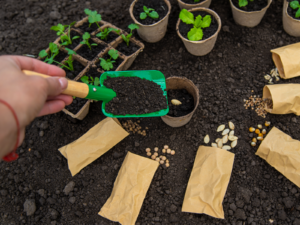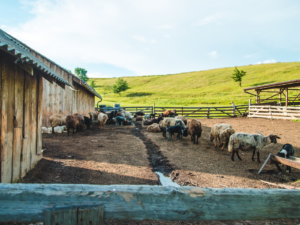
Construction in the Middle East and North Africa (MENA) will undergo significant transformation in the coming years, especially with the expanding population.
While the sector is slowly moving towards reducing energy consumption and increasing renewable raw materials and biofuels usage, countries focusing on green construction materials will witness significant employment opportunities and meaningful expenditures in technology and human resources.
The urbanization rate in the MENA region will exceed 70 percent (average for all developing countries: 54 percent) in the upcoming years. In parallel, cement production in the region has nearly tripled to approximately 500 million tonnes since 2000 according to a report published by Ecomina.org.
In Lebanon, many initiatives support sustainable construction, in which green cement plays a significant role. However, the industry still faces many challenges despite the new technologies that innovative startups are creating.
Green Concrete vs. Traditional Concrete
Traditional concrete is a mix of cement, sand, and aggregates, originating from quarries whereas green concrete is the result of replacing all or some of these traditional materials with materials originating from solid waste.
“The production process of green concrete minimizes environmental destruction and provides a solution to the disposal of waste materials,” states Najib Gerges, Professor at the University of the Balamand.
Gerges considers that instating laws and regulations in Lebanon are essential for the usage of green concrete in structural applications, which might take a lot of time to happen, mainly due to the recent economic crisis that the country is currently facing.
“Unfortunately, we do not use green concrete in Lebanon for many reasons,” says Marcel Mansour, Civil and Construction Engineer and Board Member of the Lebanese Green Building Council, in an interview with Berytech. The reasons he cites include the fact that ingredients used for green concrete are currently being imported, thus expensive. This is topped by the fact that many local engineers are not familiar with this advanced technology while on the other hand, suppliers have not moved to market and educated engineers about green concrete’s strengths and ecological values. Additionally, the orders of engineers in Tripoli and Beirut have not made any move in this direction nor imposed or given incentives for the use of green concrete.
Concrete Replacement in Lebanon
This however has not stopped Lebanese entrepreneurs from working on the development of their green concrete mixes with the objective of commercializing the product. The founders of Reconcrete started from their university lab to develop an eco-friendly hollow concrete block. They strive to reduce the impact of concrete manufacturing and the amount of waste dumped in landfills.
Through their research project, founders Rawan Ghanem and Sarah Aintrazi tested green concrete on cylindrical specimens and beams while trying to partially replace the raw materials of concrete with non-biodegradable solid wastes.
“Today Reconcrete provides hollow concrete blocks composed of green concrete,” explains Ghanem. “We tested the main properties of the block, such as compressive strength, water absorption, and percent cavity, and the results complied with the national and international standards. We also received feedback from experts in block manufacturing who have noticed a better finish than regular blocks. Reconcrete has not started actual production for the project and the feedback is limited to properties and not customers,” Ghanem elaborated.
Green Concrete Impact On The Economy
Regarding the impact of using green concrete in Lebanon, Mansour explained: “Our cement production for local use can be reduced by 70 percent on average. This reduction will lower gas emissions, dust, water pollution, and noise in the cement factories. In addition, green concrete can decrease the volume of quarried raw materials to fabricate the cement, lower the construction cost, solve most waterproof challenges, and enhance the construction life span by at least 30 percent.”
Mansour added: “Green concrete also contributes to an additional benefit reflected by the reduced cost of the reinforced concrete structures of a range of 5 to 50 percent depending on the size and importance of the project. The cost reduction is much higher in the countries where those industrial waste materials are generated like in Europe, North America, and South Africa.”
Among the many challenges posed by a rapidly urbanizing world is the need for more energy and raw materials to feed an expanding population, infrastructure expansion, disposal of ever-increasing volumes of waste, and development of sewage systems. To deal with these generation-spanning issues, the national governments face a difficult task.
This article is published under the Diverting Waste by Encouraging Reuse and Recycling (DAWERR), a five-year activity funded by the United States Agency for International Development (USAID) with the goal to establish sustainable and replicable integrated solid waste diversion and valorization solutions in rural areas. of Lebanon.









